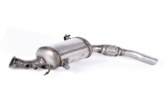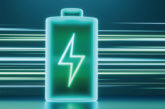
Having worked in the emissions industry, for European Exhaust and Catalyst (EEC), for more than 18 years, Ben Kendrick’s friends, family members and colleagues in the industry often start a conversation with the same question: what’s going to happen to you guys with all these electric vehicles (EVs) now?
It’s not difficult to realise that EVs do not require an exhaust system, and no demand for these parts obviously has a direct impact on our core business.
Now, the shortest answer I would give to that question is that I remain sceptical of the government’s ambitious target and not everyone wants an EV, for varying reasons. However, to expand on that we need to look at a few statistics:
- The government’s plan is to phase out sales of all new petrol and diesel cars by 2030, with an exemption for a limited number of hybrid vehicles until 2035
- Currently, around 1.3% of vehicles on the UK roads are fully electric
The first thing to consider is whether the UK has the infrastructure to charge these EVs? There are huge amounts of public funding being budgeted for charging stations around the country and, additionally, BP has announced a £1 billion investment in rapid charging stations. But that would suggest we are nowhere near yet, and that is for the 1.3% of vehicles currently on the road – how much closer will the infrastructure be when only EVs are to be sold (as new) in eight years’ time?
Consider also what this means for the EV owners; the ideal choice would be to charge a vehicle at home – how is this possible if someone lives in an area with shared parking or on a roadside where sometimes it isn’t possible to park in front of their own home. Also, does this mean streets will be lined with charging cables? What does that mean for health and safety? What does it mean for crime rates for the materials in the cables?
Since the announcements were made, two things have happened to the used car market:
- Used car prices rose by 30% on average last year
- The market boomed with sales up 11.5%
What does this tell us? In my opinion, it’s a market prediction that used petrol and diesel cars will be around for a long time to come. A good proportion of the country will hold onto their cars for longer before changing them, as they do not want to move to EVs or cannot afford to; the average cost to buy an electric car in the UK is around £44,000, prices range from £17,350 up to £138,826 or even more.

So, looking at the original question in terms of future sales of catalytic converters (cats) and diesel particulate filters (DPFs), I think the demand for these products will continue well past the government’s axe blow on the internal combustion engine. If vehicle owners keep their cars longer, then they will require regular maintenance and continuing MOT tests; therefore, the likelihood of a cat or DPF replacement is higher.
Another thing to consider is our markets outside the UK. We have a large customer base throughout Europe and beyond, and there are a number of countries that will not apply the same bans as the UK. Developing countries often run older vehicles and their emission laws may still be catching up with other countries. EEC’s current and future development plan is well placed to cover the vehicles still being produced up to 2030. The demand for our products will long surpass mine and my colleagues’ working lives!
Who knows, a 2006 Ford Focus diesel could become a future classic!







